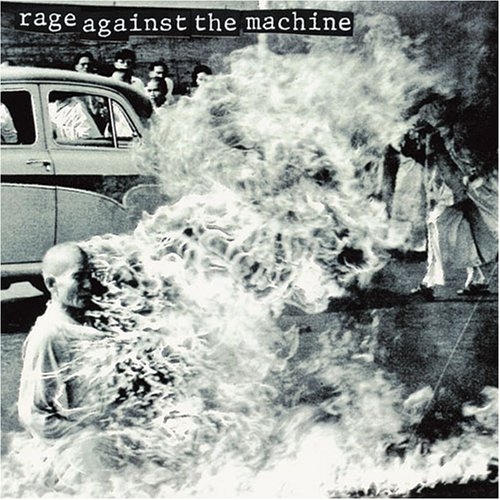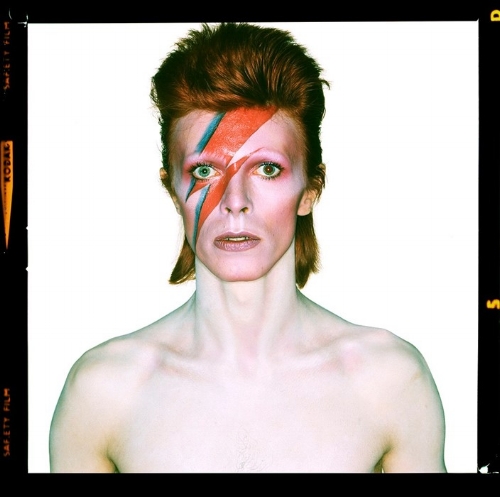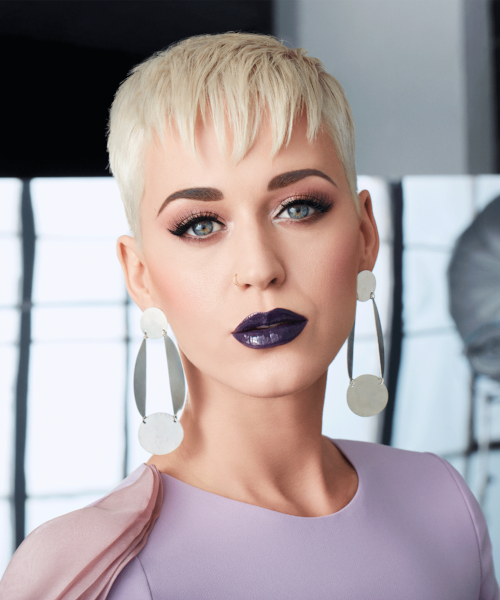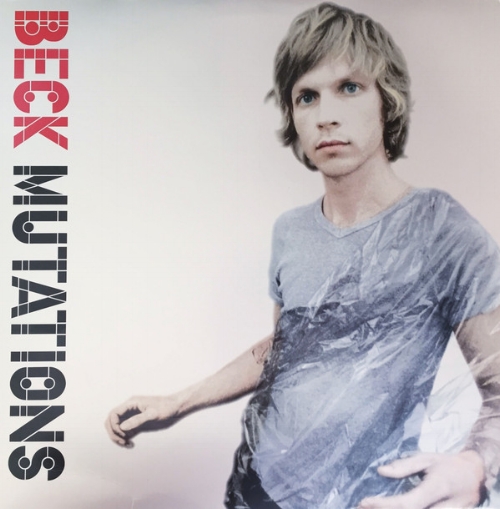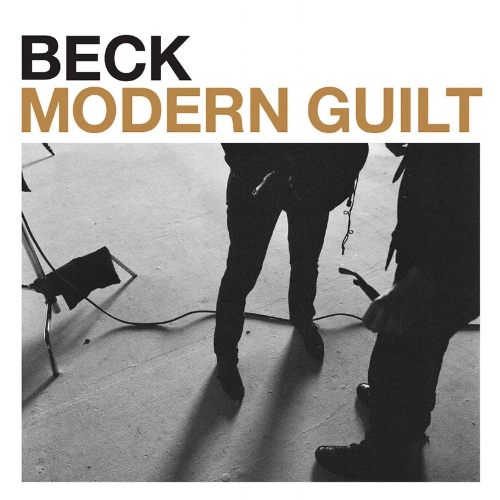FEATURE:
STOP the Music!
IN THIS PHOTO: Rihanna (whose song, Don’t Stop the Music, has been played by U.S. President Donald Trump (at his rallies) against her wishes)/PHOTO CREDIT: Craig McDean for The New York Times Style Magazine
The Artists Speaking Out Against Politicians Using Their Songs Without Permission
__________
THERE are loopholes and sneaky avenues…
PHOTO CREDIT: @fentybeauty/@rihanna
politicians can embark down in order to get certain songs played at their speeches - or they can blatantly nick them without regard for any morals or artist rights! We all know the scene, don’t we?! Whether it is here or the U.S., some politician will stride towards a podium with a recognisable song playing loudly. A lot of times, the song’s title fits in with their mandate and, for the most part, is some really awful pun or corny message that makes you cringe. The songs themselves are good but politicians select songs whose title/chorus ‘speaks’ for them and says what they are all about. Leaders, especially, are culpable of taking liberties regarding artists’ songs and using them without permission. I will talk about Donald Trump and why he is in the news again but, right now, look at the recent ‘dance’ Prime Minister Theresa May performed that used an ABBA song. This piece explains how ABBA do not want their music used in this context and how, on more than one occasion, our P.M. has defied their ruling:
“The 2010 quote has resurfaced on social media after Prime Minister Theresa May danced on stage to Dancing Queen at the Conservative Party conference yesterday.
Although the Swedish pop icons have not commented on the anthem being used, some on Twitter have rediscovered some sharp words of warning Andersson issued to the Danish People’s Party when they used Mamma Mia at their rallies.
The two situations are, of course, different: the DF, a far-right group, had changed the lyrics of Mamma Mia to Mamma Pia in tribute to their then-leader Pia Kjaersgaard…
IN THIS PHOTO: ABBA’s Benny Andersson/PHOTO CREDIT: Knut Koivisto
“ABBA never allows its music to be used in a political context,” he said at the time, according to BBC News.
“This is something that we have pointed out to the Danish People's Party."
He had also chastised them for changing the lyrics, saying: “"Firstly, you cannot just rewrite songs as you like and secondly we want them to understand that we have absolutely no interest in supporting their party.”
Musicians are often speaking out against their songs being used in politics: Foo Fighters did the same in 2008 during the US presidential campaign when John McCain and Sarah Palin used their track at a rally.
And more recently, Donald Trump reportedly used Adele’s Rolling In The Deep at a campaign rally and her people shot back: "Adele has not given permission for her music to be used for any political campaigning”.
You can see Donald Trump’s name appearing in that piece and it seems to be the case that a disliked and unpopular leader will choose quite a cool or popular track to make themselves seem hip and ‘with-it’. The fact artists like ABBA and Foo Fighters stand against the politicians who use their music; nobody came to them to inform them they would be using their music. Essentially, they have got a song off Spotify and played it and that is it. The artists, hearing this, have spoken out and distanced themselves from that politician.
IN THIS PHOTO: Foo Fighters/PHOTO CREDIT: Getty Images/Press
Not only does using a song without an artist’s permission create legal issues but it looks bad on them. Imagine being Foo Fighters and hearing a Republican politician using one of your songs. The Foo Fighter boys are Democrats and would not want their fans to assume they support Republican ideologies. The same goes for ABBA. They do not want to be seen as big supporters of Theresa May and have rightly taking umbrage. I am not sure how much political leaders know about the musical world but, as this article explored – when talking about Theresa May’s appearance on Desert Island Discs – some have incredibly awful taste:
“Theresa May will be the least hip prime minister since John Major. Political journalists contemplating the forthcoming premiership of Britain’s new leader may not currently be focussing on May’s taste in music but as a pop critic, I am duty bound to consider whether the contents of a politician’s Spotify playlist offer any handy insights to their style of leadership.
Since the Britpop boom of the Nineties, we’ve endured the reigns of guitar slinging amateur rocker Tony Blair and indie rock acolyte David Cameron, who regularly annoyed rebellious rock stars by proclaiming how much they liked their music. Even Gordon Brown pretended to like the Arctic Monkeys in a dismal effort to seem au fait with popular taste…
Does it even matter what music our leaders listen to? Obviously, it’s not the first thing you look for on their CV. As May goes into those delicate Brexit negotiations, I don’t think anyone’s going to be wondering if she geed herself up in the morning with a dose of Rick Astley’s Never Gonna Give You Up, or entered the boardroom to the strains of Europe’s The Final Countdown.
The younger generation, however, who voted overwhelmingly to Remain, might be concerned to be represented by someone whose idea of pop culture seems to have atrophied before most of them were even born. Dancing Queen was released in 1976. Since then we’ve had punk rock, hip hop, Britpop, techno and grime”.
Whilst it may not be important that a politician has naff taste in music; when it comes to using songs to soundtrack conference entrances or using them at rallies; that is a different matter and goes behind an artist’s back. I love it when artists attack politicians because they name-check them and say they like their music! The fact their reputation is being dented because of that association is enough to get them taking to social media and the press! The cases of political figures using music without permission goes back a long way.
IN THIS PHOTO: Former British Prime Minister David Cameron/PHOTO CREDIT: PA Wire/PA Images
I am reminded of a case in 2010 when The Smiths’ guitarist Johnny Marr came out against David Cameron (the then-Prime Minster) ‘forebade’ him from saying he liked the band’s music:
“It has become something of a tradition for British prime ministers to name-drop a rock star or two in the hope that a bit of cool will rub off by association, only to be publicly and embarrassingly rebuffed.
Who can forget Gordon Brown's Arctic Monkeys debacle in a men's magazine, when he was unable to name a single track? Or Tony Blair's admission that he was a fan of Oasis – only for lead singer Noel Gallagher to announce that he was fed up with taking "flak" for it?
David Cameron, stop saying that you like The Smiths, no you don't. I forbid you to like it.
— Johnny Marr (@Johnny_Marr) 2 December 2010
Now David Cameron has become the latest to run the gauntlet of the uneasy and usually unrequited relationship between politician and musical muse.
Johnny Marr, a founding member and the lead guitarist of The Smiths, yesterday called on the prime minister to stop saying that he liked the band.
While Marr hasn't explained why he was so incensed at being to Cameron's taste, perhaps Margaret on the Guillotine, Morrissey's song that imagined the execution of Mrs Thatcher, from his 1988 debut album Viva Hate, might have been a clue as to what the band think of the Conservative party.
Marr is not the first musician to take exception to Cameron. Radiohead's frontman, Thom Yorke, came forward to dispute a claim made by Cameron during his appearance on Desert Island Discs that Yorke had performed the song Fake Plastic Trees, his favourite, at a show following a request by the prime minister”.
There is a difference between taste and unpopular association and those who use music without prior consent. This article shows the cases where politicians have been named and blasted for using music without the consent of the artist/band. A few examples stood out to me – one involving the music-mentioned and maligned Donald J. Trump:
“7. Bon Jovi
Song: "Who Says You Can't Go Home"
Politician: John McCain
Outcome: While Bon Jovi issued a disapproving statement about the McCain camp's use of their song, no legal action was taken and usage continued unabated.
9. Bruce Springsteen
Song: "Born in the U.S.A."
Politician: Ronald Reagan, Bob Dole, Pat Buchanan
Outcome: An adviser to Reagan asked The Boss if he could use "Born in the U.S.A." during his re-election campaign in 1984. Springsteen turned him down. This episode is seen as the start of Springsteen's progressive awakening, and since then, he has become an outspoken liberal. In later years, Dole and Buchanan were similarly turned down.
12. Elton John
Song: "Rocket Man," "Tiny Dancer"
Politician: Donald Trump
Outcome: Trump admires Elton John. He even referenced one of the British singer's songs by disparagingly calling North Korean leader Kim Jong-un "Rocket Man." John has known the president for decades, but he turned down Trump's invitation to perform at his inauguration. John also had asked that his songs not be used during the 2016 presidential campaign but Trump continues to use songs such as "Tiny Dancer" at political rallies”.
There is a long list of musicians attacking politicians for using their music without their prior knowledge. Is it, then, a legal issue if a song is used?! This article explains the law and drills down to the real reason artists do not want politicians using their songs: they do not agree with their politics:
“Do you remember the time Donald Trump played “It’s The End of the World as We Know It” at a campaign rally and REM told him not to use their music "for your moronic charade of a campaign?" Or that time John McCain used “Running on Empty” in a TV ad bashing Obama and Jackson Browne sued him? Or that time Rand Paul used “Tom Sawyer” during his Senate run and Rush said that it was obvious Paul “hates women and brown people?"* It seems like every time there’s an election, you can't swing a dead cat without hitting a band upset at a politician for using its music. And with a year left before the general election, it’ll happen a few more times at least.
Most of the time it's just a blip on the news, something fun to chat about on a slow work day. But for some reason this election cycle it’s become a THING, launching a thousand and one think pieces like this one over the copyright issues inherent in this particular type of controversy.
Let’s clear this up first: using a copyrighted song without a license is infringement, even if it’s for a non-commercial/political reason. Songs generally have many copyright owners (the writers, musicians, record label, licensing houses, publishers, etc.) and that means you need several licenses, not just one. The RIAA has a useful primer illustrating a campaign’s legal responsibility when licensing music. Here are some highlights:
"When music is played in public, such as at a campaign event, it is typically necessary to obtain a license for the musical composition (words and music). It is not necessary to obtain a license from the owner of the sound recording (usually a record label).”
"A campaign must obtain permission from the owner of the musical composition (usually a music publisher [such as ASCAP, BMI, or SESAC]). This is known as a 'synch license.’”
“[I]f a campaign wants to use a specific recording of the song (e.g., Survivor’s recording of 'Eye of the Tiger'), then the campaign must obtain permission from the owner of the sound recording (usually the record label). This is known as a 'master license.'”
ASCAP has its own primer, stating:
“[I]f the campaign wants to use a song as its theme, they should contact the management for the artists and/or songwriters of the song in question and obtain their permission.”
So you need permission. And fair use, an oft-claimed but little understood doctrine, won’t give you relief either. As this Loyola of Los Angeles Entertainment Law Review article points out, using a song without permission for a political campaign typically won't qualify for fair use protection because:
1. The use of the music is rarely transformative - despite the fact that political campaigns are not commercial, the song’s meaning is rarely altered, commented upon, or otherwise changed enough to differentiate itself from the initial use;
2. The use of the music, often to bolster a candidate’s standing in the eyes of supporters and/or to bash other candidates, does not serve the public interest and is therefore not worthy of free usage; and
3. If the music is used repeatedly, it could create a financial harm to the artist who would have otherwise been paid if the music had been properly licensed.
But let’s not kid ourselves; this is not a copyright issue. Copyright is merely the mechanism by which a musician can get the candidate to stop and/or pay damages. This is about politics”.
IN THIS PHOTO: Taylor Swift/PHOTO CREDIT: Getty Images
“Artists, especially established ones, rightly view their reputation as a business asset. If people like the brand, they buy the product. If the brand offends them, they don’t buy the product. A good brand gives you not only money, but influence. That’s how Taylor Swift is able to force Apple to change its policy with a single blog post. So when artists perceive their brand to be under attack, they understandably lash out. Trademark law can give them the tools to do that.
Under the Lanham Act (the law governing trademarks), trademark infringement can occur if the use of a song by a politician is likely to create confusion** in the marketplace that the musician endorses the politician, especially if this association harms the musician’s reputation (referred to as “dilution by tarnishment”). But meeting this bar isn’t so easy. To determine whether a likelihood of confusion exists, the federal courts have developed an eight-factor test (called “the Sleekcraft factors” after the landmark 1979 Ninth Circuit case, AMF, Inc. v. Sleekcraft Boats). Those factors are:
1. The strength of the mark;
2. The proximity or relatedness of the goods;
3. The similarity of the marks;
4. Any evidence of actual confusion;
5. The marketing channels used;
6. The degree of care customers are likely to exercise in purchasing the goods;
7. The defendant's intent in selecting the mark; and
8. The likelihood of expansion into other markets”.
Although there is clarity regarding the law and distinctions; why do politicians keep using particular songs and gaining such fevered backlash? In the case of someone like Theresa May drunkenly stumbling on stage to ABBA; one assumes it was a very misinformed decision by the Conservatives who felt it would make her seem accessible, cool and a bit ‘down with the kids’. If she wanted to do that then she could have played some Skepta or Dizzee Rascal but it would have been tragic to see her come on to some Grime tune and pretend she had any idea of what the music is about! The fact she looked like a demented aunt who had just sat on a drawing pin and was looking for the nearest toilet not only reflected bad on ABBA but took her cool-o-meter right into the minuses! Rolling Stone shed more light onto the reasons why politicians use songs from particular artists for their campaigns and speeches:
“Nine times out of 10, it’s a young advance person who thinks it’s a cool song to play when the guy’s walking in and the candidate hasn’t a clue what was playing,” he says. “In this case, Donald Trump could have walked in that room: ‘I want that Neil Young song, and it better be playing loud.’ But I don’t know.” (Reps for Trump, as well as Walker, Mitt Romney and Senator Marco Rubio, who have run into this problem repeatedly throughout recent election cycles, did not respond to requests for comment.)
Either way, the impact of such unauthorized use can be devastating for a songwriter. “The artist gets drawn into the question of whether or not to take any action, and run the risk of giving the politicians some additional publicity, or [allowing] the public for one second to think that someone like Neil Young was endorsing Donald Trump,” says Jon Landau, Springsteen’s longtime manager. “It’s kind of a reverse endorsement trap – Ronald Reagan declares Bruce as one of his own, and then Bruce has to either let it stand or actively disassociate. When the confusion gets big enough, most artists will, one way or the other, step in”…
IN THIS PHOTO: Former U.S. President Bill Clinton addresses a joint session of Congress on 17th February, 1993/PHOTO CREDIT: Getty Images
Of course, the opposite effect can happen. Mick Fleetwood recently said Bill Clinton’s campaign never requested permission for what became his iconic 1992 campaign anthem, “Don’t Stop,” but the band generally voted Democratic and didn’t object to the exposure. On a smaller scale, Gym Class Heroes’ “The Fighter” recently wound up on Hillary Clinton’s publicly released Spotify playlist (after her presidential campaign received permission from the band). “If it wasn’t Hillary, and I didn’t necessarily agree with their stance, it’d definitely be an awkward position,” says the band’s Travie McCoy, who sang and co-wrote the song. “When you’re in a position of being super-impressionable on people, you’ve got to be careful how you step.” Several artists who’ve had conflicts with politicians in recent years on this issue, including Dropkick Murphys, Axwell and Ingrosso, Heart, Tom Petty, Don Henley and Van Halen, turned down interview requests for this story.
“Why does it keep happening? I would say arrogance. Or because [candidates] want to use music in order to associate [with] fans of the artists whose music they’re using, and they think they can’t get permission,” Iser says. “What’s that expression? ‘It’s better to beg forgiveness than to ask [only] to get turned down'”.
I think a lot of the unhappy association is to do with politics and cool. Not many artists would have objected to former President Barack Obama using their music or, I feel, Labour leader Jeremy Corbyn doing the same! The more popular politicians will not face such umbrage and anger because they are speaking for the people and have that more human image – the music, as such, is being used in a positive way.
IN THIS PHOTO: President Donald Trump speaks during a campaign rally at Bojangles' Coliseum on Friday, 26th October, 2018 in Charlotte, N.C./PHOTO CREDIT: AP Photo/Evan Vucci
This all takes us to the latest case of unhappy musician-politician partnership: Rihanna being informed Donald Trump was using her music as part of his rallies.
“Less than 24 hours after endorsing Andrew Gillum, the Democratic nominee for Florida governor, Rihanna has revealed she plans to ensure President Trump stops playing her music at his rallies.
The singer tweeted about this after the Washington Post's White House Bureau Chief tweeted: "It’s been said a million times, but here’s a million and one — Trump’s rallies are unlike anything else in politics. Currently, Rihanna’s “Don’t Stop the Music” is blaring in Chattanooga as aides toss free Trump T-shirts into the crowd, like a ball game. Everyone’s loving it."
Rihanna responded "Not for much longer...me nor my people would ever be at or around one of those tragic rallies, so thanks for the heads up philip!"
Not for much longer...me nor my people would ever be at or around one of those tragic rallies, so thanks for the heads up philip! https://t.co/dRgRi06GrJ
— Rihanna (@rihanna) November 5, 2018
“Rihanna’s comments followed remarks by Axl Rose, who this weekend accused the Trump campaign of “using loopholes in the various venues’ blanket performance licenses … without the songwriters’ consent” after learning that Guns N’ Roses’ 1988 song Sweet Child O’ Mine was being played at the president’s rallies.”
Axl Rose also said that Guns N’ Roses had “formally requested r music not b used at Trump rallies or Trump associated events”.
Unfortunately the Trump campaign is using loopholes in the various venues’ blanket performance licenses which were not intended for such craven political purposes, without the songwriters’ consent.
— Axl Rose (@axlrose) November 4, 2018
Can u say “shitbags?!”💩
I guess it is pretty obvious why Trump has used a song from Rihanna. He hears something in the title or the chorus that he thinks he is about – a positivity and sense of optimism that he hopes his supporters can take to heart and be buoyed before. There will be fans of Rihanna and Guns N’ Roses who are Republicans but it is good to see artists taking a stand and, in doing so, showing the colour of their political skin (blue in this case; red in the case of British musicians).
Trump will always take liberties and drag artists down his road to perdition. I guess Kanye West is the only artist who would like his music played by the U.S. President and here, I wonder how many would feel pride when their music is used to support Theresa May. No names spring to mind and it is a sticky business. I can understand politicians need music to soundtrack their entrances or be their ‘anthems’ but artists who object to their politics shouldn’t be made to hear that indignity. Using Rihanna’s music will send a message to her fans that she is a Trump supporter when, clearly, this is not the case! The same can be said of Axl Rose. There are very few prominent musicians who are Republicans and, as such, most of Trump’s musical choices will be met with anger. Look at the Conservatives and how many modern artists are behind them?! I can’t think of any artist who is a Tory supporter and, again, it does somewhat limit options. Whilst there are no legal ramifications using music without consent; there is that political and ethical issue (and copyright) that needs to be considered. The unauthorised use will not stop but I think there is something tragic and pathetic about these politicians, the unpopular ones, using popular music because they think that makes them bigger or cooler. Rihanna wants President Trump to quit using her song, Don’t Stop the Music, for his rallies. There is a lyric in the song that goes “You’re makin’ staying over here impossible” and, if politicians like Trump keep using artists’ music without their permission we might see a lot of them…
EMIGRATING and escaping the country they love!
























































